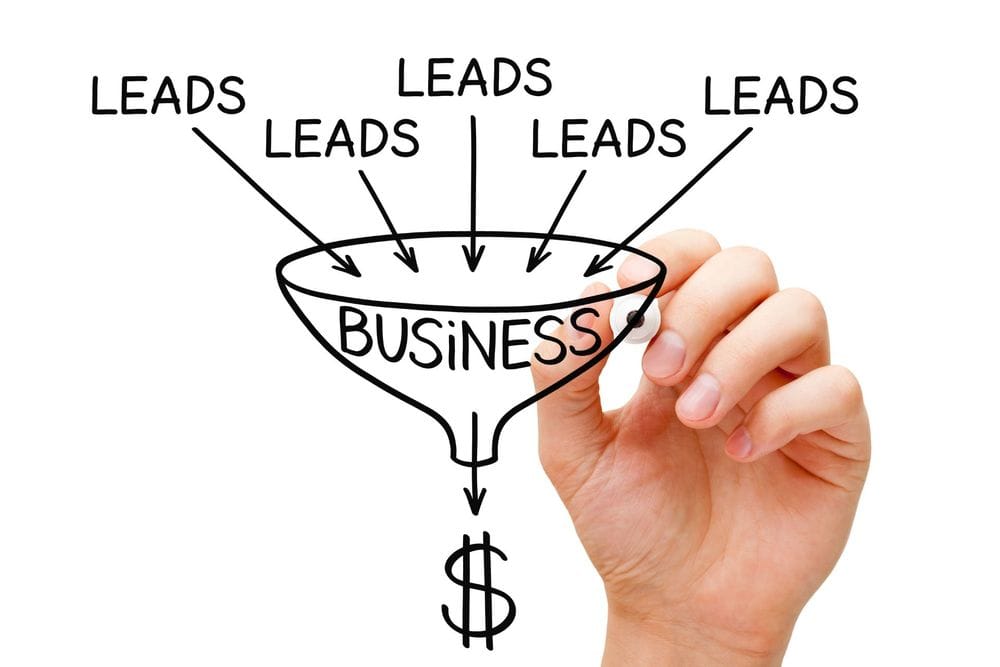For salespeople and marketers, monitoring your sales funnel metrics is key to success. But what do these metrics actually mean? And how can you use them to design an effective sales funnel? By understanding what's happening at each stage of the funnel, you can make changes and optimize your efforts to improve conversions and close more deals. This blog post will break down the most critical sales funnel metrics and explain how to use them to improve your sales process.
What Is A Sales Funnel
A sales funnel visually represents the customer's journey from awareness to purchase. It typically starts with top-of-the-funnel activities, such as marketing and lead generation. It progresses through middle-of-the-funnel activities, such as lead qualification and product selection, to bottom-of-the-funnel activities, such as order fulfillment and post-purchase support.
Sales funnels help you identify which marketing and lead generation activities are most effective at attracting customers and moving them further down the funnel towards purchase. It can also help you determine which products are most popular with customers and which stages of the purchase process are causing problems or delays.

Sales Funnel Stages
Sales funnels are often used in business-to-business (B2B) and business-to-consumer (B2C) settings but can also be applied to other industries and areas. The different stages of the funnel can vary depending on the sector but typically include discovery, interest, evaluation, then purchase and post-purchase. Marketing and sales teams use sales funnels to track the progress of potential customers and improve their marketing and sales efforts.
Discovery
The top of a sales funnel typically refers to the awareness and discovery stage, where potential customers are first introduced to your product or service. In this stage, you turn prospects into leads by capturing their attention and interest, so they'll move on to the next funnel stage.
To do this, you must create compelling marketing materials that grab their attention and express why your product or service is the best solution to their problem. You also need to ensure that your materials are accessible and easy to understand so they'll keep reading (or watching, if you're using video).
Once you've captured their attention and interest, the following sales funnel stage is the consideration stage. During this stage, your potential customers evaluate their options and consider whether your product or service is the right fit for their needs.

Interest
The middle of a sales funnel is the stage where potential customers actively consider your product or service. At this stage, they’re comparing you to other options and deciding whether or not to commit.
To succeed in the middle of the sales funnel, you need to provide potential customers with enough information to make an informed decision. This means having detailed product descriptions, case studies, testimonials, FAQs, and anything else that will help them understand what you’re offering.
It would help if you made it easy for potential customers to contact you with questions or concerns. They should be able to reach you by phone, email, or live chat. And they should be able to get ahold of you quickly – you don’t want them to lose interest while waiting for a response.
Evaluation
The bottom of a sales funnel is the point at which you have identified qualified leads, and they are going through the sales proposal and negotiation phases. Prospects who make it to this stage are serious about buying, so it's important to give them the information they need to make an informed decision. This means getting clear on pricing, features, benefits, and any other objections they might have. Once you've overcome these hurdles, you're one step closer to closing the deal.
It's important to remember that not all leads will make it to this stage of the funnel. Some may drop out at any stage along the way, so you need to continue generating new leads to keep your pipeline full. Also, don't be afraid to cull some of the weaker leads from your list - it's better to focus on quality than quantity.
Purchase And Post-Purchase
The purchase stage of the sales funnels the point at which prospective customers become customers. Several factors can influence the completion of a sale.
The following is a list of important purchase factors:
- Trust: Is this a brand that I can trust? Do they have good reviews?
- Value: Is the product worth the price? Am I getting my money’s worth?
- Ease of purchase: How easy is it to buy the product?
- Customer service: What is the level of customer service? Will they be there to help me if I have a problem?
Assuming that all of these factors are met, the next thing that will influence a sale is timing. If a customer is ready to buy a product, they are more likely to do so if the purchase is easy and convenient. If a customer has to jump through hoops to make a purchase, they may decide to wait or look for an alternative product.
After your customer has made a purchase, it's vital to follow up and nurture them through the post-purchase stage of the sales funnel. This is where you can focus on building a relationship with your customer and ensuring they're happy.
There are several things you can do during this stage to nurture your customer relationships:
- Check-in after use: Once your customer has had a chance to use your product, check-in with them to see how they like it. This is also an excellent time to ask for feedback or offer additional support.
- Send a thank-you note: A simple thank-you goes a long way in making your customers feel appreciated. Consider sending a handwritten message or card along with their purchase.
- Follow up after installation or delivery: If your product requires installation or delivery, follow up afterward to ensure everything went smoothly. You can even offer a discount on future purchases if they had a positive experience.
The goal of the post-purchase stage is retention. By showing that you care about their experience and offering additional support, you can build a lasting strong relationship with your customers.

Sales Funnel Metrics At Every Stage
Top Of Funnel: Entrance Metrics
If customers are not aware of your product or service, there is little chance they will purchase it. Therefore, by monitoring entrance metrics, you can ensure that your marketing efforts align with customer needs. Entrance metrics measure how many people are entering your sales funnel and how. Common entrance metrics include website visits, entrance points, email subscribers, and social media followers.
Here's why it's a good idea to keep an eye on entrance metrics:
- Marketing efforts can be fine-tuned to attract the right type of traffic. If entrance metrics show that most visitors are leaving the site without taking action, it could indicate that your marketing efforts are targeting the wrong audience.
- Entrance metrics can help you assess which channels drive the most traffic to your site. This information can be used to allocate marketing resources more effectively.
- Entrance metrics can give you insights into what type of content is resonating with your audience. If you see that a specific type of content is causing visitors to stay on your site longer.
Entrance metrics provide valuable insight into your sales funnel. By tracking how many people are entering your funnel at each stage, you can identify bottlenecks and make changes to improve the efficiency of your sales process.
Middle Of Funnel: Conversion Metrics
The most common conversion metric is the conversion rate, which is the percentage of visitors who take the desired action, such as making a purchase or signing up for a subscription. But, other conversion metrics should be noted, such as the number of leads generated and the number of new customers acquired. Each business will have different goals and, therefore, different conversion metrics.
The best way to improve your website's conversion rate is to track your progress over time and measure it against your goals. Use tools like Google Analytics to see where people are dropping off in your sales funnel and identify areas for improvement. Then make changes to your strategy, whether it's modifying your outreach or simplifying purchasing.
Bottom Of Funnel: Sales Metrics
Sales metrics are paramount. They give you a way to track progress and goal achievement. However, there are many different sales metrics, and it can be challenging to know which ones to follow. Here is a list of some common sales metrics that can be useful for measuring progress in your sales team:
- Total Revenue: This is perhaps the most important metric for sales teams, as it directly measures how much money your team is bringing in. Tracking revenue can help you see whether your team is on target to reach its goals and where improvements need to be made.
- Average sale amount: The average sale amount metric measures how much revenue is generated per sale. This can be a helpful metric to track over time to see if your business is growing or if sales are falling off. To calculate this, take your total revenue for a period of time and divide it by the number of sales made during that same period. This will give you the average amount each sale is worth. Tracking this trend over time can give you a good idea of the health of your business.
- Lifetime customer value: This metric measures the total amount of money a customer is expected to spend with your company over their lifetime. This number can be valuable for sales teams because it helps them understand the potential value of each customer.
- Cost per acquisition: This metric measures how much it costs to acquire a new customer. This number is significant to sales teams because it helps them understand their marketing and sales efforts' return on investment (ROI).
- Customer churn rate: This metric measures the percentage of customers who stop doing business with your company over time. This number is essential for sales teams because it helps them track customer satisfaction and identify areas where improvement is needed.
There are many other sales metrics, but these are some of the most common and useful ones. Tracking these metrics can help you see how your team is performing and where improvements need to be made.
Takeaways
Streamlined sales funnels are the core of successful sales strategies, and there's a lot of conflicting advice out there about how to optimize them. In the end, it comes down to two key factors: figuring out what sales funnel metrics you should be tracking and then making sure you're constantly testing and editing your funnel to improve those numbers.
There are several sales funnel metrics you could track, but which are most important depends on your business goals. For example, if you're selling a physical product, you'll want to focus on the average sale amount or, perhaps, cost per acquisition. Alternatively, if you're selling a service or digital product, you might want to pay closer attention to lifetime customer value and churn rates.
No matter what business goals you have, though, there are four sales funnel metrics that are always worth paying attention to:
- Leads
- Conversions
- Customer Lifetime Value
- Revenue
Tracking these four sales funnel metrics gives you a good foundation for understanding how your sales funnel is performing. From there, you can start to experiment with different changes to see if you can improve your results.





